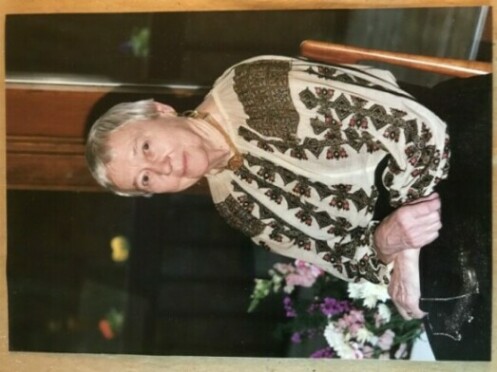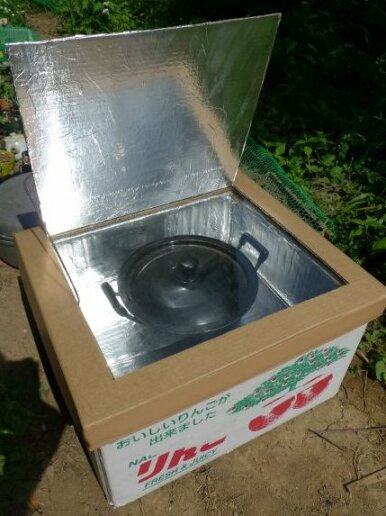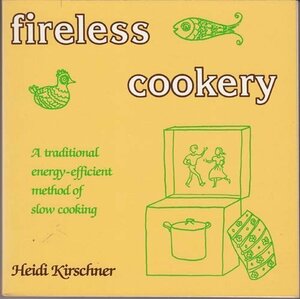Cooking with Retained Heat
by Ed Sawicki - June 10, 2020
Household cooking consumes a fair amount of energy, especially when you have to turn on an oven or keep the heat/flame under a pot for longer than a few minutes. Microwave ovens have helped reduce energy consumption for quick meals but what do you do about the higher-energy usage cooking?
If you've ever been to a lūʻau in Hawaii, you know that the main dish is kālua pig, slow-cooked in an earthen oven, which usually starts with a hole in the ground. The bulk of the cooking time is where the food is covered by insulating materials, including vegetation and dirt. The pig is cooked by heat that can't escape.
In the latter part of the 1980s, I was introduced to a similar technique, “fireless cookery”, which has other names as well. Wikipedia places it in the category of thermal cooking. When I first learned about it, I called it “cooking with retained heat”, thinking I was inventing a new name for it. I later learned that someone else used that exact term for it. One food critic at the time described it this way:
“The Kirschner fireless cooker is a plywood box, insulated with hay, straw, or blankets. The cook brings a pot of food to a boil, simmers it briefly, then covers and sets it inside the box, adds insulation, and tightly closes the lid. By evening, the dish is deliciously done. Fireless cookery uses less energy than a crockpot, and food cannot be overcooked.”

The Kirschner fireless cooker is named after Dr. Heidi Kirschner who wrote the book “Fireless Cookery.” I had the pleasure of meeting her at her home sometime in the 2000s. I was introduced to her by her son, Christopher.
I remember being impressed by her backyard garden that had, among other things, kiwi plants. It was then that I discovered her book. At her son's home, I was treated to a dinner cooked in a box that looked similar to one of the illustrations in Heidi's book.
Heidi's book was reviewed in Ms. Magazine (August 1982) by notable author Alice Walker, who wrote the book “The Color Purple”. Walker spent an evening with Heidi's daughter Susan and her family and dined with them on a meal prepared in a Kirschner cooker. Alice and Susan became lifelong friends.

I couldn't find this article with a Google search but I tracked it down to a university library in Atlanta that maintains a respository of Alice Walker's work. They were kind enough to send me an image of the article. It was barely legible, so I recreated it with some OCR scanning and a several hundred keystrokes. I'm now going to claim that I saved an Alice Walker work from oblivion. ☺
You should read the article now. Click the Back button to return here.
Heidi died on November 1, 2012 and her book is now out of print. There are probably fewer than 50 books for sale and I just ordered one.
Building my own cooker
In her book, Heidi had drawings of what such a cooker would look like—a rather large plywood box. Her box was quite a bit larger than the cooking vessel placed inside of it. Given that the lady of my house wouldn't accept such a large box sitting on her countertop or on the floor beside it, I had to build a smaller box.

My initial enthusiasm for using “space-age materials” was dashed when research showed that ordinary cardboard is a suitable material. I built a box made for a specific 8-inch diameter saucepan. The box was lightweight, so it could be easily moved out of the way when not in use.
The corrugated structure of cardboard provides large volumes of air pockets that trap heat and the cardboard is a poor heat conductor. There's little danger of the cardboard catching fire because its ignition point is no lower than 400 degrees Fahrenheit and water boils at only 212 degrees. The bottom of the box has direct contact with the hot saucepan, so I used a ceramic floor tile left over from a bathroom remodel there to increase the safety factor.
Figure 2 shows a photo of a cooker built with cardboard that has no slot for a saucepan handle and can accomodate larger pots than the one I built.

The surfaces of the cardboard nearest the saucepan has a reflective material—I used aluminum foil—glued to it to reduce the heat reaching the cardboard. You can think of this as reflecting heat back at the food.
The box was about 3 to 4 inches wider than the diameter of the saucepan so I could fill those 1.5 to 2 inches per side with additional cardboard that provided insulation. This made the box about 12 inches square–a size my wife could live with.
I cut a vertical slot partially down one side for the handle of the saucepan. A removable piece of cardboard covered the vertical slot once the saucepan was placed in the box.
Since heat rises, I paid particular attention to insulation at the top of the box. The lid of the box was a sandwich of cardboard–foam–cardboard, though I'm not convinced the foam was needed.
The insulated box worked well. With the saucepan holding boiling water and food, it could be placed in the box and the box exterior did not get warm, except for a little heat near the slot for the saucepan handle. If you're going to use this for all-day cooking—as you would a crockpot—use a cooking vessel without a side handle and eliminate the slot. Make sure you can move the pot from the stove to the box safely.
Cooking

In spite of meeting Heidi in person, I didn't have a copy of her book back then, so I had no recipes to go by. I experimented. If a recipe called for simmering for 15 minutes after boiling, I just left the saucepan in the box for 15-20 minutes.
Once boiling, the water temperature dropped very little when it was in the box as long as the food was also at that temperature. So, you'd bring the water to a boil on your stovetop and keep it there for a few minutes—or longer if the food is a large piece of meat—before transferring it to the box.
Fireless Cookery's Future
This article and the restoration of Alice Walker's article have inspired Heidi's children to have her book updated and rereleased. I've been asked to be part of that effort. I'm not expecting that fireless cookery take American kitchens by storm, though it would help with our climate change issues. It is, however, a technology appropriate for the third-world where energy is often a precious resource.
Sources
Notes on Fireless Cooking - Cooking With Retained Heat, by Imma und Dieter Seifert
Fireless Cookery, by Heidi Kirschner, Madrona Publishers, 1981, 179 pages, ISBN 0914842587, 9780914842583
The Seattle Times, Obituary, Heidi Kirschner
Retained heat (haybox) cooking
Retained Heat Cooking: The Secret to Stretching Your Fuel Supplies
Turn Any Recipe Into A Thermal Cooker Recipe In 3 Easy Steps